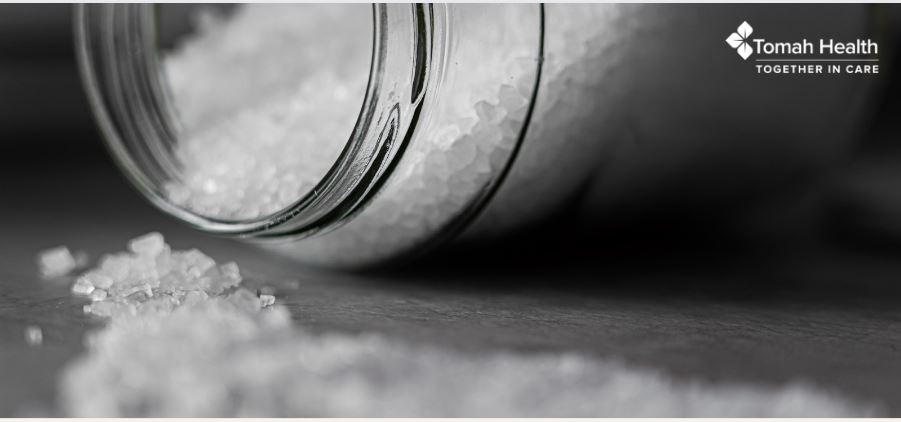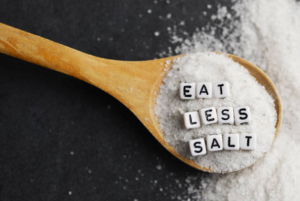Parents everywhere understand that the food kids eat is more than just a collection of nutrients arranged on a plate. We all understand that nutrients are essential for a healthy diet and lifestyle. Unfortunately, conflicting information from various sources can make it difficult to follow the excellent advice of balancing nutrients and minerals in meals. For example, consider one nutrient essential for life yet often gets a bum rap – salt. Your body needs a small amount of sodium to work properly, but too much is bad for your health.
History of Salt
While sodium has many forms, most of the sodium we consume is from salt. As far back as 6050 BC, salt has been an essential and integral part of the world’s history, as it has been interwoven into countless civilizations. Used as a part of Egyptian religious offerings and valuable trade between the Phoenicians and their Mediterranean empire, salt, and history have been inextricably intertwined for millennia, with great importance placed on salt by many different cultures.
Even today, the history of salt touches our daily lives. The word “salary” was derived from the word “salt.” Salt was highly valued, and its production was legally restricted in ancient times, so it was historically used as a method of trade and currency. The word “salad” originated from “salt” and began with the early Romans salting their leafy greens and vegetables. Undeniably, the history of salt is both broad and unique, leaving its indelible mark in cultures across the globe.
Daily Sodium Consumption
Most people probably think of salt as that white granular seasoning found in saltshakers on virtually every dining table. It is that, indeed, but it is far more. It is an essential element in the diet of humans, animals, and many plants. Long before the advent of refrigeration, people used salt to preserve food. Salt remains one of the most effective and widely used food preservatives. The human body requires a small amount of sodium to conduct nerve impulses, contract and relax muscles, and maintain the proper balance of water and minerals. We are estimated to need about 500 mg of sodium daily for these vital functions. However, too much sodium in the diet can lead to high blood pressure, heart disease, and stroke. It can also cause calcium losses, some of which may be pulled from the bone.
According to the Centers for Disease (CDC), Americans consume more than 3,400 milligrams (mg) of sodium daily. This is well above the federal recommendation of less than 2,300 mg of sodium daily as part of a healthy eating pattern. Most sodium comes from processed and restaurant foods. In fact, more than 40% of the sodium we eat daily comes from just ten types of foods. Bread and rolls are the top sources. Eggs and omelets are the tenth leading source of sodium.
Top 10 Sources of Sodium |
|
| For the General Population | For People Ages 6–18 |
|
|
| *Chips, popcorn, pretzels, snack mixes, and crackers | |
Salt consumption isn’t horrible for your health as long as you consume it in moderation. This fall, look at your sodium intake and see if you need to make a difference and reduce your sodium intake.
Tips for Reducing Sodium Intake
At the Grocery Store
- Buy fresh, frozen, or canned vegetables with no salt or sauce added.
- Choose packaged foods labeled “low sodium,” “reduced sodium,” or “no salt added” when available.
- Compare the amount of sodium in different products by reading Nutrition Facts labels. Choose the options with the lowest amounts of sodium.
- When buying prepared meals, look for those with less than 600 milligrams (mg) of sodium per meal, which is the upper limit set by the Food and Drug Administration for a meal or main dish to be labeled “healthy.”
- Check the amount of sodium per serving, and remember to check the number of servings per container.
- Purchase fresh poultry, fish, pork, and lean meat rather than cured, salted, smoked, and other processed meats when possible. For fresh items, check whether saline or salt solution has been added—if so, choose another brand.
- Ask your grocer if they have a low-sodium shopping list available.
- Ask to speak to the registered dietitian at your local grocery store to learn more about buying low-sodium products. If your grocer needs a registered dietitian, ask your doctor for a referral. A registered dietitian can provide valuable guidance on reducing your family’s sodium intake and managing blood pressure.
At Home
- When cooking, use alternatives to replace or reduce salt, such as garlic, citrus juice, salt-free seasonings, or spices.
- When possible, prepare rice, pasta, beans, and meats from their most basic forms (dry and fresh).
- Eat more fruits and vegetables.
- Limit sauces, mixes, and instant products, including flavored rice and ready-made pasta.
Dining Out
- Ask for nutrition information before you order, and select a lower-sodium meal.
- Ask that no salt be added to your meal.
- Order vegetables with no salt added or fruit as a side item.
- Split a meal with a friend or family member.
- Keep takeout and fast food an occasional treat.
Check out one of our monthly recipes that is low in sodium but flavorful!
Tomah Health’s Less Salt & More Herbs Recipe: Heart Healthy Salmon with Salsa Verde

